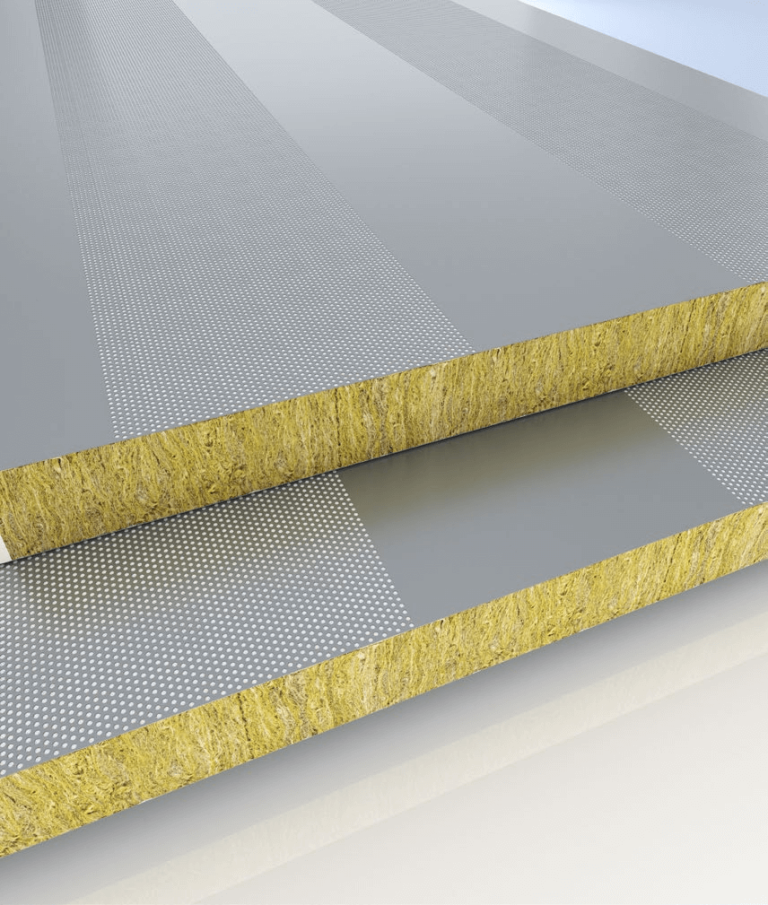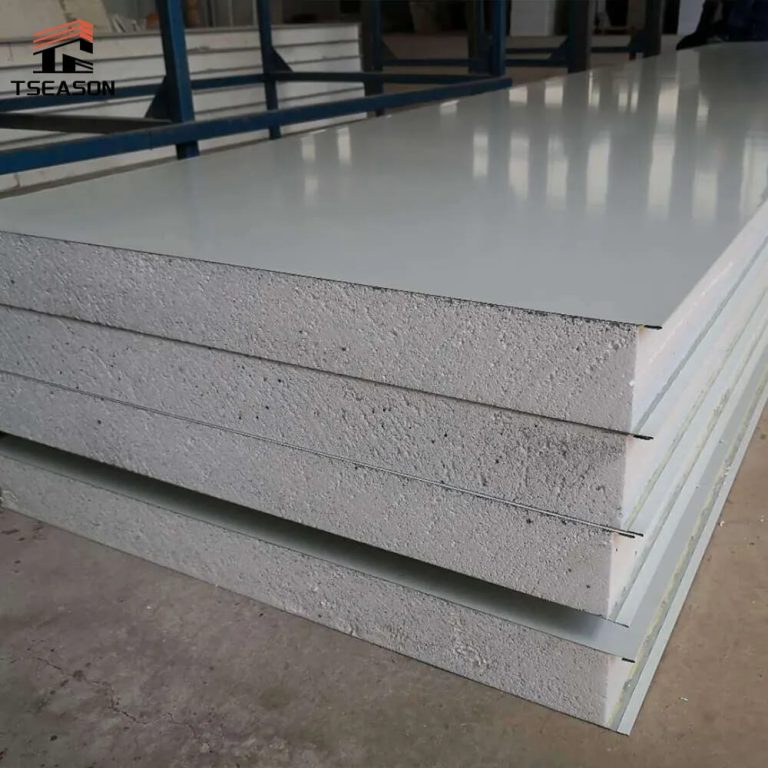What is the most important property of a sandwich panel?
Date 2025.05.10
1. Thermal Insulation Performance
Core Metric: The lower the thermal conductivity (λ-value), the better the insulation performance.
- Polyurethane (PUR/PIR): λ ≤ 0.022 W/m·K (optimal).
- Rockwool: λ ≈ 0.035–0.040 W/m·K.
- EPS/XPS: λ ≈ 0.030–0.038 W/m·K.
Applications:
- Cold storage and logistics: Requires λ ≤ 0.025 W/m·K to minimize energy consumption.
- Energy-efficient buildings: High insulation is mandated for LEED-certified projects to reduce carbon footprints.
2. Fire Resistance
Core Standards:
- European Standard (EN 13501): Class A (non-combustible, rockwool), Class B (fire-retardant, PUR/B1).
- Chinese Standard (GB 8624): B1 (self-extinguishing), A2 (rockwool).
Risk Mitigation:
- Commercial buildings (e.g., malls, data centers): Class A fireproofing (rockwool) is mandatory.
- Industrial facilities (e.g., chemical plants): Require B1 fire resistance to prevent fire spread.
3. Structural Strength
Key Parameters:
- Compressive strength: PIR panels ≥ 150 kPa (supports forklift loads).
- Wind resistance: ≥ 1.5 kPa (withstands Category 12 typhoons).
Applications:
- High-rack warehouses (15 m+ height): Require embedded reinforcements to prevent deformation.
- Coastal areas: Wind resistance ensures structural safety.
4. Waterproof & Moisture Resistance
Core Requirements:
- Seam sealing: IP68 rating (EN 13859) prevents water ingress.
- Closed-cell rate: PUR ≥ 90% (prevents water absorption and swelling).
Challenges:
- High-humidity regions (e.g., Southeast Asia): EPS panels degrade due to moisture; PIR is superior.
- Food cold storage: Humidity control relies on panel moisture resistance.
5. Lightweight & Easy Installation
Data Comparison:
- EPS panels: 15–20 kg/m² (lightest).
- Rock wool panels: 25–30 kg/m² (requires structural reinforcement).
Cost Efficiency:
- Lightweight design reduces transport and installation costs by 30%.
- Modular systems (e.g., Cam-Lock) shorten construction time by 50%.
6. Eco-Friendliness
Regulatory Drivers:
- EU REACH: Restricts VOC emissions (formaldehyde-free adhesives required).
- Green certifications (LEED/BREEAM): Require ≥30% recycled content.
Performance Prioritization by Application
| Application | Core Performance Priorities | Recommended Core |
|---|---|---|
| Cold storage | Thermal insulation (λ ≤0.025) > Moisture resistance > Strength | PUR/PIR |
| Industrial plants | Fire resistance (B1/A-class) > Wind resistance > Cost | Rockwool/PIR |
| Commercial buildings | Fire resistance (A-class) > Aesthetics > Lightweight | Rockwool/decorative metal |
| Temporary housing | Cost > Lightweight > Fast installation | EPS/XPS |
Conclusion
The "most critical performance" of sandwich panels depends on the application:
- Cold storage/energy-efficient buildings: Thermal insulation is king—choose PUR/PIR.
- High-risk industrial zones: Fire safety is non-negotiable—rock wool is irreplaceable.
- Cost-sensitive projects: EPS/XPS balances affordability and lightweight design.
Businesses must balance performance, cost, and regulations while aligning with regional trends (e.g., Asia-Pacific’s cold chain expansion driving PUR demand).
Choose Tseason Sandwich Panel
Realted
Products


